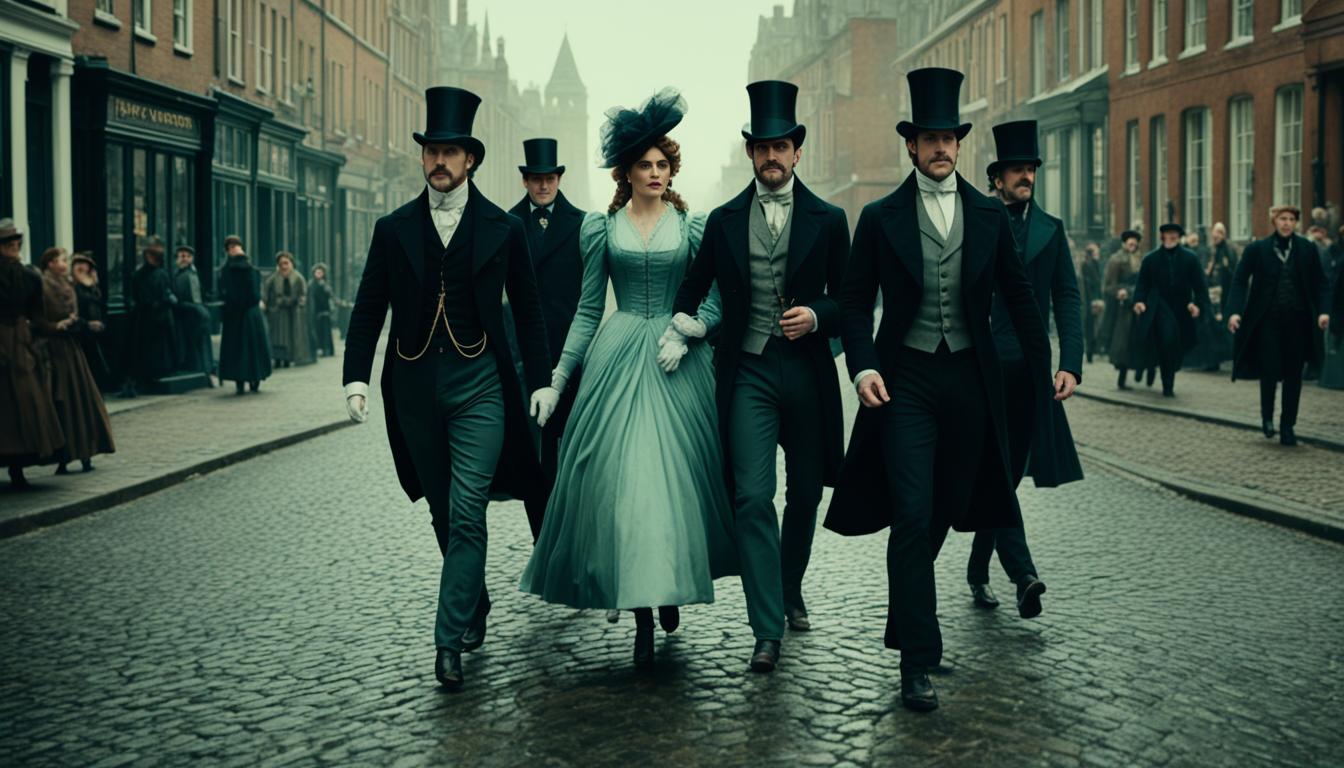In the Victorian era, fashion trends were often influenced by the royals and upper classes of British society. One of the most unusual and controversial fashion trends to emerge during this time was the “Alexandra Limp,” where women began imitating the limping gait of Alexandra of Denmark, the Princess of Wales. The trend spread rapidly across the country, with women in London and other major cities going to great lengths to mimic the Princess’s distinctive walk.
The Alexandra Limp became a symbol of elegance and sophistication among Victorian women, despite its peculiar nature. It was considered fashionable to walk with a slight limp, often achieved by wearing mismatched shoes or even using specially designed shoes with one heel slightly lower than the other. The trend persisted for several years, showcasing the powerful influence that the royals had on Victorian fashion and the lengths that people would go to in order to emulate their style.
Key Takeaways
- The Alexandra Limp was a fashion trend in Victorian England where women imitated the limping gait of Princess Alexandra of Denmark
- The trend spread quickly among upper-class women in London and other cities
- Women would wear mismatched shoes or specially designed footwear to achieve the limping look
- The Alexandra Limp was seen as a symbol of elegance and sophistication despite its unusual nature
- The trend highlighted the strong influence of the royals on Victorian era fashion trends
The Rise of Alexandra of Denmark as a Fashion Icon
In 1863, Alexandra of Denmark married Prince Albert, who later became King Edward VII. As a member of the British royal family, Alexandra quickly rose to prominence as a fashion icon during the Victorian era. Her impeccable sense of style and grace captured the hearts of the British public, and her influence on fashion trends was undeniable.
With the increasing popularity of photography, Alexandra’s fashion choices spread rapidly throughout Britain. Women eagerly sought to emulate her style, closely following her every sartorial decision. From the cut of her gowns to the accessories she wore, Alexandra set the standard for Victorian fashion.
One of Alexandra’s most iconic fashion statements was her affinity for wearing broad, elaborate choker necklaces. This style choice was born out of necessity, as Alexandra sought to cover a childhood scar on her neck. However, her chokers quickly became a sought-after accessory among British women, sparking a long-lasting trend that would endure throughout the Victorian era.
As a beloved member of the royal family, Alexandra’s influence on fashion was unparalleled. Her ability to set trends and inspire women across the nation cemented her status as a true fashion icon. The “Alexandra effect” on Victorian fashion was a testament to her enduring style and grace, leaving an indelible mark on the history of British fashion.
The Birth of the “Alexandra Limp”
In 1867, Princess Alexandra of Denmark faced a significant health challenge when she developed a severe case of rheumatic fever shortly after giving birth to her third child. The illness left her with a stiff knee and a noticeable limp, which would later become a defining characteristic of her public appearances. To help her move around more easily, the Princess often relied on various mobility aids, such as walking sticks, which quickly became fashionable accessories among her admirers.
High-society ladies, eager to emulate the Princess’s style, began adopting her limping gait as a fashion statement. Initially, they achieved this look by wearing mismatched shoes with different heel heights, creating an uneven stride that mimicked Alexandra’s limp. This peculiar trend, which became known as the “Alexandra Limp,” soon caught the attention of retailers, who saw an opportunity to capitalize on the craze.

Enterprising shoe manufacturers and retailers began producing and selling pairs of shoes with intentionally mismatched heel heights, making it easier for women to achieve the desired limping effect without having to purchase two separate pairs of shoes. This savvy marketing move further fueled the popularity of the “Alexandra Limp,” as more and more women embraced the trend as a way to demonstrate their admiration for the Princess and their position within the fashionable elite.
The fashion imitation of Princess Alexandra’s limp was not limited to the United Kingdom; it quickly spread to other parts of Europe and even to the United States. The trend was particularly popular among young women who were eager to emulate the Princess’s grace and elegance, despite the physical challenges she faced. Interestingly, this period also saw the rise of vampire panics in New, demonstrating the complex interplay between fashion, culture, and superstition in the Victorian era.
Victorian Limping Fashion: A Controversial Trend
The Alexandra Limp, a fashion folly that swept through Victorian society, was not without its share of controversy. While many aristocrats and upper-class women embraced the trend, others viewed it as a distasteful and offensive caricature of human infirmity. The controversial trend sparked heated debates and drew sharp criticism from various quarters of society.
Newspapers, such as the North British Mail and the Dundee Courier and Argus, published scathing articles about the Alexandra Limp, labeling it as idiotic, ludicrous, and a monstrosity. These publications argued that the trend crossed the line of decency by imitating a physical ailment for the sake of fashion. Critics believed that while fashionable folly had its place, there should be limits to what was considered acceptable.
Despite the fashion criticism, the Alexandra Limp maintained its popularity among a significant portion of Victorian society. Many aristocrats and wealthy individuals continued to embrace the trend, viewing it as a fashionable statement and a way to emulate the style of the beloved Princess of Wales. The controversy surrounding the trend only seemed to fuel its appeal among certain circles.
The debate surrounding the Alexandra Limp highlighted the complex relationship between fashion and society in Victorian England. While some saw the trend as a harmless expression of style, others viewed it as a reflection of the era’s sometimes misguided values and priorities. The controversy surrounding the Alexandra Limp served as a reminder that fashion, even in the context of Victorian society, could be a contentious and divisive subject.
The Decline of the Alexandra Limp and Subsequent Fashion Trends
As with most fashion trends, the Alexandra Limp eventually fell out of favor as new styles emerged and the Victorian fashion landscape evolved. The trend’s decline was likely accelerated by the negative press it received and the growing perception that it was in poor taste to imitate a physical disability for the sake of fashion. Critics argued that the trend was insensitive and disrespectful to those who suffered from genuine limping or mobility issues.
Fashion journals of the time announced the discontinuation of the Alexandra Limp, signaling the end of its reign as a popular trend. However, these same journals also reported on new trends that emerged in its wake, such as closely fitted skirts that restricted women’s movement, forcing them to walk as if their feet were tied together. These restrictive clothing styles, while not explicitly mimicking a limp, still limited women’s mobility and perpetuated the notion that beauty often came at the expense of comfort and practicality.
The rise and fall of the Alexandra Limp demonstrated the powerful influence of royal figures on fashion during the Victorian era and the fleeting nature of fashion trends. While the trend may have been short-lived, it left a lasting impact on the history of Victorian fashion and served as a reminder of the complex social and cultural factors that shape the ever-evolving world of style.

Leave a Reply